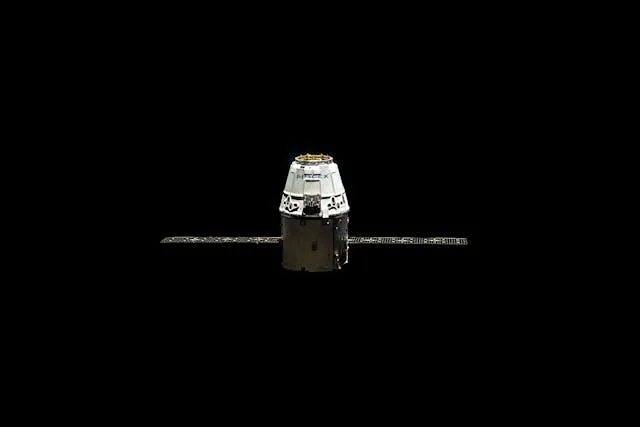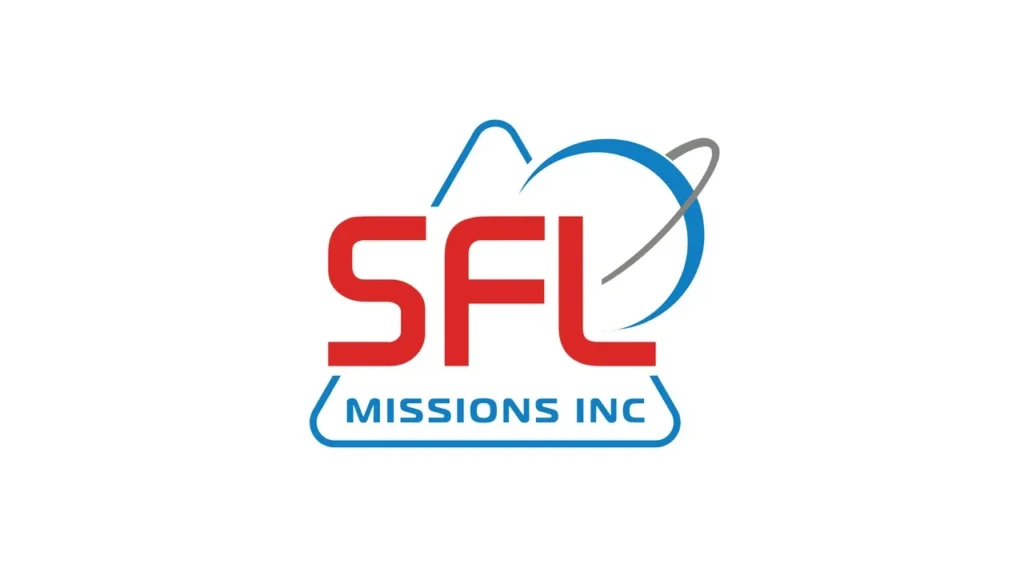
SFL Missions Announces Successful Launch and Deployment of Two GHGSat Greenhouse Gas Monitoring Satellites
SFL Missions Inc. has announced the successful launch and deployment of two new greenhouse gas monitoring microsatellites, GHGSat-C12 and GHGSat-C13—nicknamed “Pierre” and “Valmay”—developed for GHGSat Inc., a global leader in satellite-based emissions monitoring. The satellites were built on SFL’s compact yet powerful 15-kg NEMO platform, which has served as the foundation for GHGSat’s earlier spacecraft and continues to prove its value in space-based environmental observation.
Dual Satellite Launch via SpaceX Transporter-14
The two satellites were launched on June 23, 2025, aboard SpaceX’s Transporter-14 ride-share mission from Vandenberg Space Force Base in California. Following deployment, ground control promptly established stable communications with both Pierre (GHGSat-C12) and Valmay (GHGSat-C13), confirming their health and functionality.
“This launch marks another major milestone in our long-standing partnership with GHGSat,” said Dr. Robert E. Zee, Director of SFL Missions. “We’re proud that our NEMO platform continues to serve as the workhorse for these critical environmental missions. Our focus has always been on delivering high-performance, cost-effective small satellite missions, and we’re pleased to contribute to GHGSat’s vision of global climate monitoring.”
Supporting a Global Climate Intelligence Mission
GHGSat, based in Montreal, is widely recognized as the pioneer and current global leader in facility-level greenhouse gas monitoring from space. The company made history with the world’s first satellite capable of directly detecting and quantifying methane and carbon dioxide emissions from individual industrial sites. Its satellite constellation provides high-resolution, near real-time emissions data that supports both regulatory and corporate initiatives to reduce greenhouse gas output and accelerate global decarbonization.
GHGSat’s satellites serve industries such as oil and gas, power generation, mining, waste management, and agriculture—sectors that are both significant contributors to emissions and central to global climate action. Decision-makers in governments, regulatory bodies, and multinational corporations depend on GHGSat’s data to track progress toward emissions targets, improve transparency, and develop actionable strategies to mitigate climate impact.
The addition of Pierre and Valmay expands GHGSat’s growing constellation and significantly boosts its monitoring capacity, enabling more frequent revisit times and improved global coverage. These improvements are essential to supporting the rising demand for granular, verifiable, and timely emissions intelligence from both public and private stakeholders.
Advanced Satellite Engineering on a Proven Platform
The GHGSat-C12 and C13 satellites were designed and built by SFL Missions using its proprietary NEMO platform—an ultra-compact satellite bus tailored to missions that demand high precision on a limited budget. The same platform was previously used to construct GHGSat’s first nine operational satellites, establishing a successful track record in both engineering reliability and mission performance.

What sets SFL’s NEMO platform apart is its high degree of attitude control, pointing accuracy, and target tracking—capabilities that are rarely found in satellites of this size and cost category. These features are vital for GHGSat’s mission, as capturing emissions data from specific sources on Earth requires precise alignment of onboard sensors with ground targets.
“In Earth observation missions—especially those focused on environmental data collection—accuracy is paramount,” said Dr. Zee. “Our platforms are engineered with a focus on control stability, sensor alignment, and operational resilience. These characteristics enable GHGSat’s satellites to gather data with a level of precision that rivals much larger, more expensive systems.”
Robust Design for Long-Term, High-Performance Operations
In addition to high pointing accuracy, SFL Missions integrates ample design margins into every spacecraft. These include enhanced onboard power systems, expanded data storage, and robust downlink capabilities. The result is a platform that supports longer mission durations and more effective data collection over time.
These design decisions have already paid off. GHGSat’s existing NEMO-based satellites have consistently exceeded expectations in terms of data return and mission longevity, offering significant return on investment for the company and its customers.
By leveraging this proven engineering architecture, Pierre and Valmay are expected to deliver equally high levels of performance, contributing to GHGSat’s goal of providing the most comprehensive and accurate greenhouse gas monitoring service from space.
A Legacy of Mission Success and Innovation
SFL Missions, headquartered in Toronto, Canada, has developed and launched more than 88 operationally successful satellites, with over 380 cumulative years in orbit. Its experience spans nano-, micro-, and small satellite classes, with mission applications ranging from Earth observation and environmental monitoring to communications, space science, maritime tracking, and astronomy.
Over the past two decades, SFL has earned a reputation for delivering spacecraft that balance innovation, reliability, and affordability. Whether working with commercial companies, academic institutions, or government agencies, the firm has consistently demonstrated its ability to customize satellite solutions to meet diverse mission requirements.
SFL’s modular bus designs cover a wide mass range—from 3 kg to 500 kg—giving the company the flexibility to support individual spacecraft development or entire constellation deployments. The NEMO platform used for GHGSat’s microsatellites is just one of several product lines in SFL’s growing portfolio of space-proven systems.
Expanding Capabilities and Global Reach
To meet the rising global demand for small satellite missions, SFL Missions is currently expanding its Toronto-based manufacturing facilities. The company has more than 20 spacecraft in various stages of development or awaiting launch, a testament to its rapidly growing customer base and project pipeline.
In addition to internal expansion, SFL has launched a flexible satellite production initiative called the Flex Production program. This unique offering allows clients to choose the development location of their spacecraft—whether at SFL’s headquarters, a third-party facility, or even within the client’s own premises.
The Flex Production model is designed to accommodate organizations seeking more control, co-development opportunities, or regionalized manufacturing, without compromising on SFL’s standards of quality or reliability.
Partnering for a Sustainable Future
SFL Missions’ collaboration with GHGSat reflects a broader trend in the aerospace industry: the growing alignment between space-based technologies and sustainable development goals. With increasing awareness of climate change and rising pressure on both public and private sectors to reduce emissions, demand for real-time environmental intelligence has never been higher.
Satellite-based solutions like GHGSat’s are uniquely suited to this challenge. They provide independent, verifiable, and scalable monitoring that helps eliminate data gaps, enhances transparency, and ultimately drives accountability and action on emissions reduction. SFL’s ability to deliver high-performance microsatellites at lower cost is a key enabler of this mission.
“Our work with GHGSat is about more than satellites,” said Dr. Zee. “It’s about building the tools that empower humanity to respond to one of the most urgent challenges of our time—climate change. We’re honored to support that mission with our technology, expertise, and continued innovation.”
With the successful launch of Pierre and Valmay, GHGSat’s satellite constellation continues its rapid growth, reinforcing its leadership in space-based climate monitoring. As demand for emissions data accelerates, and global regulations tighten, the need for precision monitoring at scale is becoming a necessity rather than a luxury.
SFL Missions remains committed to supporting this evolving market with spacecraft that deliver uncompromising performance in compact, affordable packages. As the company continues to innovate, expand, and collaborate with pioneering customers like GHGSat, it’s helping to redefine the role of small satellites in shaping a more sustainable, data-driven future.
About SFL Missions Inc.
SFL Missions Inc. is a world-class developer of microspace missions, specializing in the design, construction, and operation of nano-, micro-, and small satellites for diverse applications. With over two decades of mission heritage and a reputation for technical excellence, SFL delivers reliable and cost-effective spacecraft for commercial, academic, and government clients worldwide.
About GHGSat Inc.
GHGSat is the global leader in high-resolution greenhouse gas monitoring from space. The company operates the world’s first and only commercial satellite constellation capable of detecting facility-level emissions, empowering governments and industries with critical insights to reduce emissions and combat climate change.




